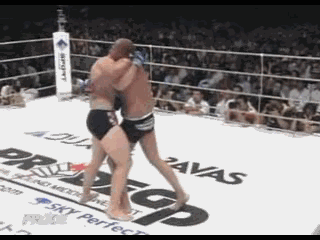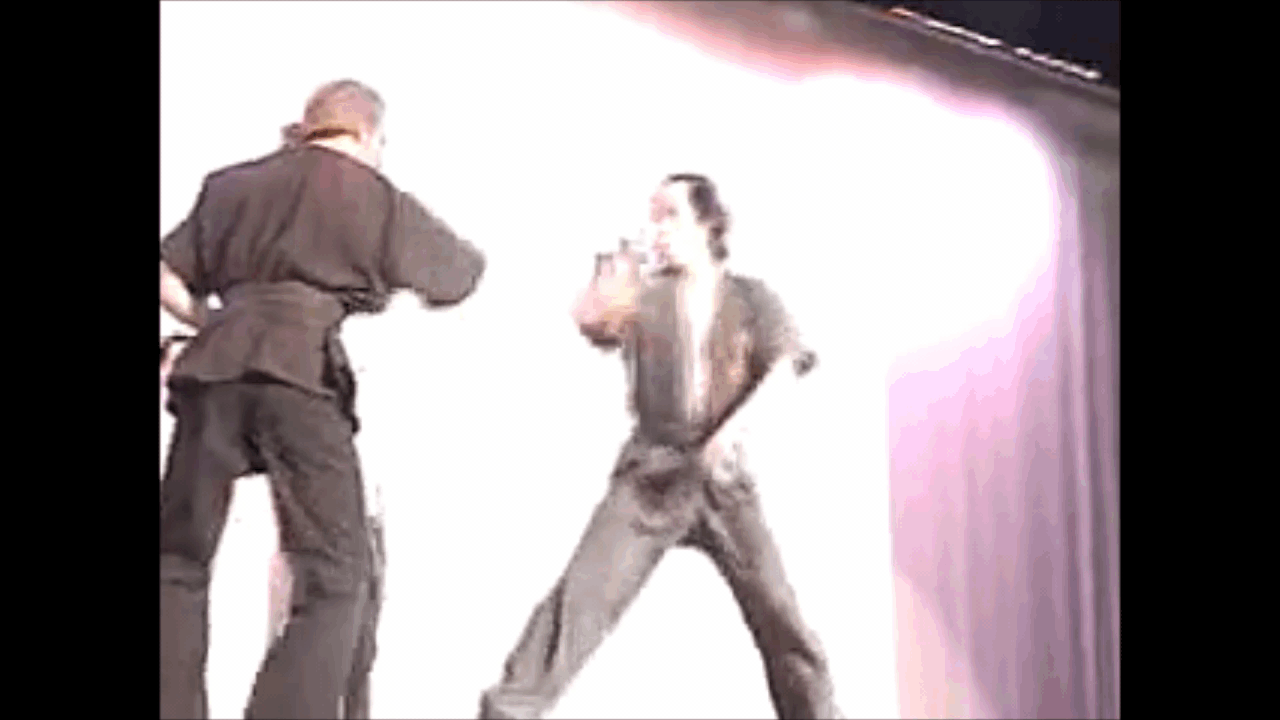It would be interesting to discuss what makes a martial art but that is another topic.
To be more precise, it develops physical and mental attributes that are useful in self defense. This, coupled with alive and intense training (done through sparring sessions after classes) allowed early generations of practitioners to become proficient at fighting and to apply the techniques in real encounters.
I know, I'm trying to help the best I can but some posts on a forum are peanuts compared to real training.
In fact, aikido instructors that are interested in functionality, know the why's and don'ts of the system
and can fight are almost non existent, although I'd put a penny on guys like Bruce Bookman.
I didn't expect the Spanish inquisition! (Sorry, couldn't resist)
I'll try to illustrate my point with an example. How much history do you have to know to use a fork? If, like me, you're from a working class background but one day you somehow ended up eating at a high-end restaurant, you might have tried to crack the code of "which fork to use for what". Personally, this put my reasoning skills to the test, and although I guessed some things right (the dessert spoon was an easy one) I ended up using the meat knife for fish (or whatever). Now, from a functional perspective, I used the meat knife in a 100% valid manner and it did a great job at cutting the fish. Yet, saying that I understand how to use that knife would be a bit of a stretch.
Oh I agree with you, it's difficult (and imagine having to do it for the whole art you're trying to study, all the while trying to figure out what's BS and what's good, in light of extremely poor results in cross-style exchanges). That's why I try to apply critical thinking, stick to the most reliable sources and exchange with practitioners of other arts.
When uke is unbalanced on contact, he relies on tori for his balance, so his reflex is to keep holding. Otherwise he'll fall. You can see this here at the 1:20 mark:
I like the fresh perspective on aikido that you are trying to bring, and I didn't mean to discourage you. My point was no more than a caveat: you might come up with something perfectly valid from a Jow Ga or functionality perspective (as I did with the knife) and you might even guess something right (the dessert spoon). However, it is very different from understanding the movements in light of the core principles and goals of aikido, which I can guarantee you won't. Many martial artists have tried to do so and most of those interpretations don't hold up to the facts (like the weapons retention stuff). They are innovations and while they might actually be very valuable from a practical perspective, they are just different from aikido as it was designed. That being said, I'm actually very curious to see what you'd come up with.
Morihei Ueshiba's speeches had multiple layers of interpretation, and technical explanations were done through spiritual imagery (= the guy talked and nobody understood). However, this is a very concrete, physical concept. At its most basic, it involves using visualisations to pull the tissues in your body in opposing directions at the same time (up-down, left-right, front-back, etc.), which creates internal tension that you use to maintain your structure when force is applied to you (this description has probably holes due to my limited understanding of the phenomenon and the limits of written descriptions of physical movements). If you look at the Sunadomari video from 1:10 on, he first shows "normal" movement, then movement under the effects of this internal tension, which is called "aiki". With your CMA background, you might see similarities with Chen Taiji's "pulling silk" or the pile-standing of Xingyi and Yi Quan. Actually, Ueshiba used the exact same formula as the Chinese internal arts as he talked about "unifying heaven, earth and man".
Depends on your goals, I guess.
Several authors have thoroughly researched Ueshiba's pre-Daito-Ryu training, including Ellis Amdur and Simone Chierchini:
"This long analysis, therefore, led us to the following conclusions, based on what (little and confused) is known about the life story of the young Morihei: before devoting himself body and soul to Daito-ryu Aikijujutsu under Sokaku Takeda, he had trained for a few months in Tenjin Shinyo-Ryu, he had received occasional teaching in Yagyu Ryu jujutsu, and had practiced Judo for a few months. This was Morihei Ueshiba’s entire martial career outside of Daito, as far as it is currently known. The fact that Morihei has studied, practiced and achieved mastery in a large number of martial disciplines would seem to be a complete fabrication." - Entire essay here:
Ueshiba’s Martial Arts Career Before Aikido Was Born
"At any rate, Morihei Ueshiba was a remarkable guy. He was a force for good, but this simplistic idea that aikido was created to create peace on earth is just not fully informed. Back in the early eighties, a number of us, under the direction of Phil Relnick, created an organization called the Japan Martial Arts Society (JMAS). Four times a year, we’d have great martial artists come and present to non-Japanese living in Japan. Doshu Kisshomaru, O-Sensei’s son, did a presentation, and one very sincere guy raises his hand and through translation says, “When did your father become a pacifist?” Someone translates this to Doshu, and he sort of looks like, “What?” The guy translates it again, and he just cracked up. I mean, there were tears in his eyes, and he said, “My father was never a pacifist.”" - Source:
Ellis Amdur: On Aikido – Aikido Journal
This has been recognised by the current Doshu:
“To the spirit of the past Doshu”
by San-Dai Doshu Moriteru Ueshiba
“The techniques and way of Aikido that the founder O-Sensei left us, was not always easily understood by everyone. Doshu, my father, changed these so they would be easily understood, and he gave all of his life to spread this. For that reason he left behind many books that he had written. I grew up watching Doshu return from keiko to study and write for long hours and even with my child’s eyes I could see the importance of this work” - Source:
Iwama-Ryu Türkiye
It has also been researched to death:
The Ueshiba Legacy, by Mark Murray - Aikido Sangenkai Blog ;
Is O-Sensei Really the Father of Modern Aikido?, by Stanley Pranin – Aikido Journal
Tadashi Abe started training at 16 with no martial background, Rinjiro Shirata at 18, Hiroshi Isoyama at 12 (!), Terry Dobson had studied the lethal art of... American football, and I could name more. The "finishing school" thing is a hoax. The IMAF is an administrative body outside of aikido, they'll publish any brief sent by the Aikikai.
I'm not that familiar with what the Tomiki folks do but they tend to have sound ideas.
I like that. I also like this:
I would have liked to see him do it in sparring, I remember some live training footage on their channel. BTW Sumo does it against resistance:
See this video from 1:09 onwards:
Do you have good examples of aikido application against resistance? No need for competition footage (you'd only have Tomiki stuff I guess) but a sparring video would be nice, as these are rare to find.
Good points.
Aikido was Daito-ryu, plain and simple. As I said, Ueshiba didn't really have much training outside of DR (although a hip throw made its way from Yagyu Shingan Ryu to aikido, it's our koshi nage). And he hated judo because its founder supposedly learned it in China. That said, I also think that the 3000 techniques gimmick was to emphasise the fact that one could incorporate anything into aikido, which is about principles, not technical repertoire (in this, Ueshiba was not different from the other top Daito-Ryu instructors, who said the exact same thing). Also, I agree with what you've said about modern aikido: the current repertoire is much more limited now: you've got basically a dozen of techniques done from various attacks (grab, chop, etc.): the pins (5 techniques), shiho nage, tenchi nage, ude kime nage, kote gaeshi, irimi nage, kaiten nage and that's about it.


